Gutters are an essential part of your home’s exterior, ensuring rainwater is directed away from your roof, walls, and foundation to prevent costly damage. A dented gutter might seem like a minor issue, but it can significantly disrupt this system, leading to leaks, overflow, and even structural problems if left unchecked. For Auckland homeowners, this is particularly concerning due to the city’s frequent rainfall, strong winds, and occasional hailstorms. Whether the dent was caused by a ladder mishap, falling branches, or heavy hail, addressing it promptly can save you from bigger headaches down the road. Many small dents can be fixed with a straightforward DIY approach, but more complex damage may require professional intervention. In this comprehensive guide, we’ll provide a detailed step-by-step process for fixing a dented gutter, share expert tips to prevent future damage, and explain when it’s time to call in the professionals. For those tougher jobs or hard-to-reach areas, My Homes Construct is Auckland’s trusted gutter repair expert, offering solutions from minor fixes to full replacements to keep your home safe and dry through every storm.

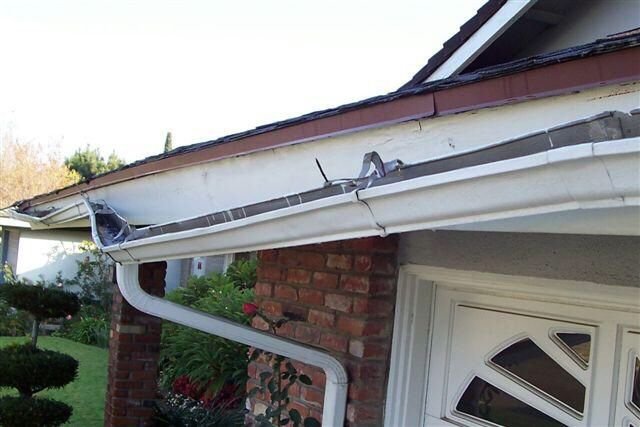
Before diving into the repair process, it’s important to understand why a dented gutter shouldn’t be ignored, especially in a city like Auckland where weather can be unpredictable. Here’s why addressing a dented gutter is critical:
Ignoring a dented gutter can turn a small fix into a major expense, making timely repairs a priority for any Auckland homeowner. Whether you tackle the repair yourself or hire a professional, addressing the issue promptly will protect your home and save you from future stress.
Understanding the cause of a gutter dent is the first step to fixing it effectively and preventing future damage. Auckland’s unique climate and housing styles contribute to a variety of factors that can lead to dents. Here are the most common causes:
Identifying the cause of the dent will help you tailor your repair approach and take preventative steps to protect your gutters from future damage, ensuring they remain functional for years to come.
Fixing a dented gutter requires a few basic tools and materials to ensure a safe, effective, and long-lasting repair. Gathering these items before you start will make the process smoother and more efficient. Here’s a detailed list of what you’ll need:
Eco Tip: Choose eco-friendly sealants and rust-proofing sprays with low VOCs (volatile organic compounds) to minimise environmental impact, a choice that resonates with Auckland’s environmentally conscious homeowners.
Having these tools and materials ready will set you up for a successful repair, ensuring your gutter is restored to full functionality.
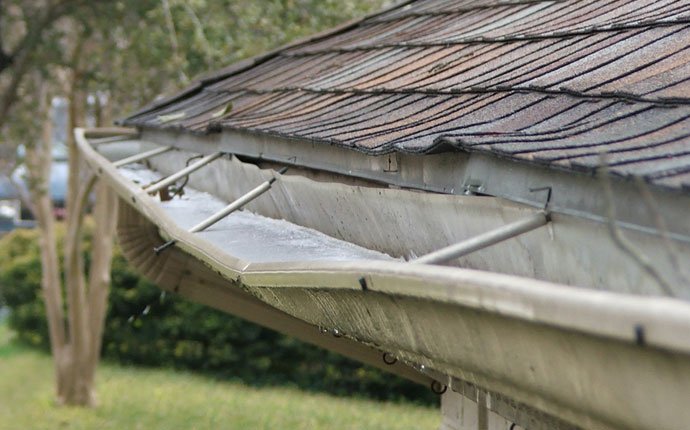
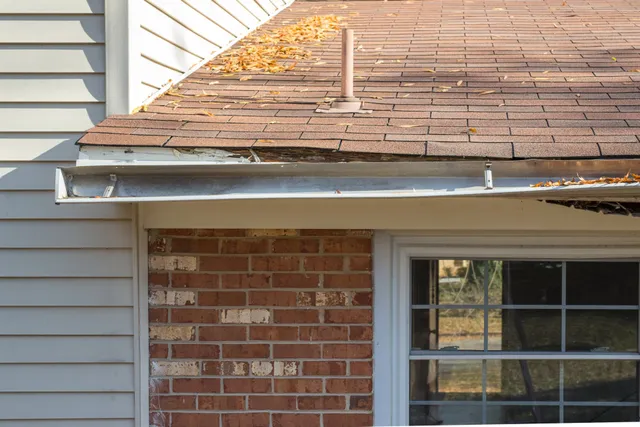
Follow this detailed step-by-step guide to fix a dented gutter and restore its ability to manage roof water runoff. This process is designed for Auckland homeowners, with safety and practicality in mind, especially given the city’s often-wet conditions.
Working at heights requires careful preparation to avoid accidents, a key concern in Auckland’s unpredictable weather.
Safety Callout: Never overreach while on the ladder; reposition it as needed to stay balanced and avoid falls. Falls from ladders are a leading cause of DIY injuries in NZ, with over 1,000 incidents reported annually.
A thorough inspection of the dented area will help you determine the best repair approach and identify any additional issues that need addressing.
A detailed inspection ensures you address all issues, preventing future leaks or water damage that could affect your home’s foundation, walls, or landscaping.
Now it’s time to reshape the dented gutter, using a gentle approach to avoid causing further damage to the material.
This method works well for aluminium or vinyl gutters, which are common in Auckland homes, and helps restore proper water flow without compromising the gutter’s integrity.
If the dent has caused cracks, splits, or small holes, sealing them is essential to prevent leaks and ensure the gutter remains watertight.
Eco Tip: Use a low-VOC, eco-friendly sealant to minimise harmful emissions, a choice that aligns with Auckland’s focus on sustainability and environmental responsibility.
If the dent has weakened the gutter’s structure or caused sagging, reinforcing it will prevent future issues and ensure long-term stability.
Reinforcement ensures the gutter can handle heavy rain without further bending, leaking, or failing, a critical consideration in Auckland’s wet climate.
After fixing the dent, testing the gutter is crucial to ensure it drains properly and the repair holds under real-world conditions.
Testing confirms your repair is effective, protecting your home from water damage during Auckland’s frequent and heavy downpours.
Preventing future dents is just as important as fixing the current one, as it saves you time, money, and stress in the long run. Here are expert tips tailored for Auckland homeowners, considering the city’s unique climate and housing styles:
Maintenance Tip: After major storms, such as those common in Auckland’s spring season, inspect your gutters for dents or debris to catch small issues before they escalate.
These preventative measures can extend the life of your gutters, keeping them functional and dent-free year-round, even through Auckland’s toughest weather.
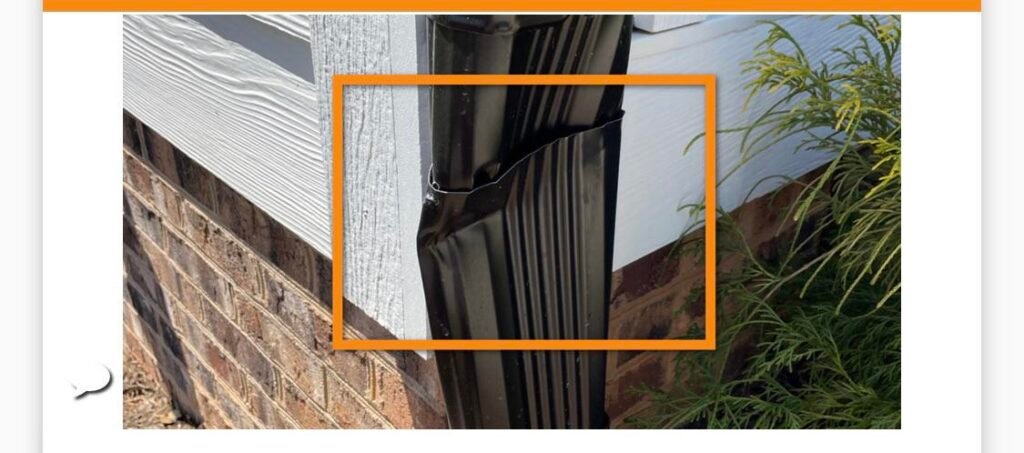
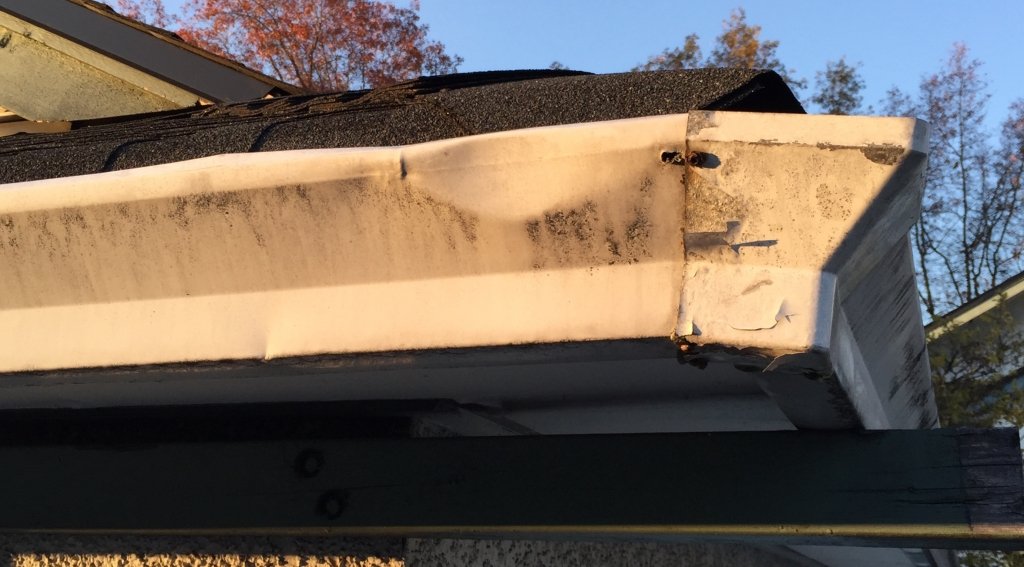
While many dents can be fixed with a DIY approach, some situations require the expertise of a professional to ensure safety, compliance, and long-term durability. Here’s when to call in the pros:
My Homes Construct offers expert gutter repair services across Auckland, ensuring your gutters are fixed safely and meet all necessary standards. Their team has experience with a wide range of gutter types and home styles, from single-storey villas to modern multi-level properties.
Don’t let a dented gutter put your Auckland home at risk of water damage. My Homes Construct is your local expert for gutter repairs, offering solutions for everything from minor dents to full replacements. Our experienced team ensures your gutters are safe, functional, and ready to handle Auckland’s wet weather, whether you’re in a villa in Ponsonby, a modern home in the North Shore, or a multi-level property in Remuera.
📞 Call the My Homes Gutter Experts: 022 315 8987
📧 Email: info@myhomesconstruct.co.nz
Contact us today for a free consultation and let us keep your home protected from the elements!
Can I fix a dented gutter myself?
Yes, small dents can be fixed with a rubber mallet and wood block, as shown in our guide. However, for deep dents, cracks, or hard-to-reach areas, it’s best to call a professional to ensure safety and compliance.
Will a dent affect gutter performance?
Yes, a dent can disrupt water flow, causing pooling or overflow. This can lead to leaks, foundation damage, or erosion around your home if not fixed, especially during Auckland’s heavy rains.
Should I replace or repair a dented gutter section?
Shallow dents can be repaired, but if the dent is deep, cracked, or causing sagging, replacing the section may be more cost-effective in the long run. A professional from My Homes Construct can help you decide the best course of action.
How often should I inspect my gutters in Auckland?
Inspect your gutters twice a year—before winter (around May) and after summer (around February)—to catch dents, blockages, or other issues early, given Auckland’s wet and windy conditions.
Can I fix a dented gutter in the rain?
No, it’s unsafe to work in the rain due to slippery ladders and poor visibility. Wait for dry, calm weather to ensure a safe and effective repair.
What’s the best material for gutters in Auckland?
Colorsteel or high-grade aluminium gutters are ideal for Auckland’s climate, as they resist corrosion and withstand heavy rain. They’re a durable choice for homes in coastal areas like the North Shore.
How can I tell if my gutter needs replacing?
Signs include widespread rust, multiple deep dents, persistent leaks, or sagging that can’t be corrected. If the gutter is over 20 years old, replacement may be more practical than repeated repairs.
What should I do if my gutter is leaking after the repair?
Check the sealant for gaps and reapply if needed. Ensure the gutter’s slope is correct, and add reinforcement if the area is still weak. If the problem persists, contact a professional like My Homes Construct for assistance.
Fixing a dented gutter quickly is essential to protecting your Auckland home from water damage, whether it’s preventing leaks, foundation cracks, or eroded landscaping. This comprehensive step-by-step guide empowers you to tackle small dents with confidence, ensuring your gutters keep rainwater where it belongs—away from your home. Regular maintenance, such as using ladder standoffs, installing gutter guards, and trimming overhanging branches, can help prevent future dents and extend the life of your gutter system. However, if the damage is severe, involves leaks, sagging, or requires working on a multi-level home, it’s wise to call in the professionals to ensure safety and compliance with NZ standards.
My Homes Construct is here to help Auckland homeowners with expert gutter care, from minor repairs to full replacements. Whether you’re in Grey Lynn, Remuera, or anywhere in between, our team is ready to ensure your gutters are up to the task. Call us at 022 315 8987, email info@myhomesconstruct.co.nz, or visit https://myhomesconstruct.co.nz to schedule a consultation today. Let us keep your home safe and dry, no matter the weather!
WhatsApp us